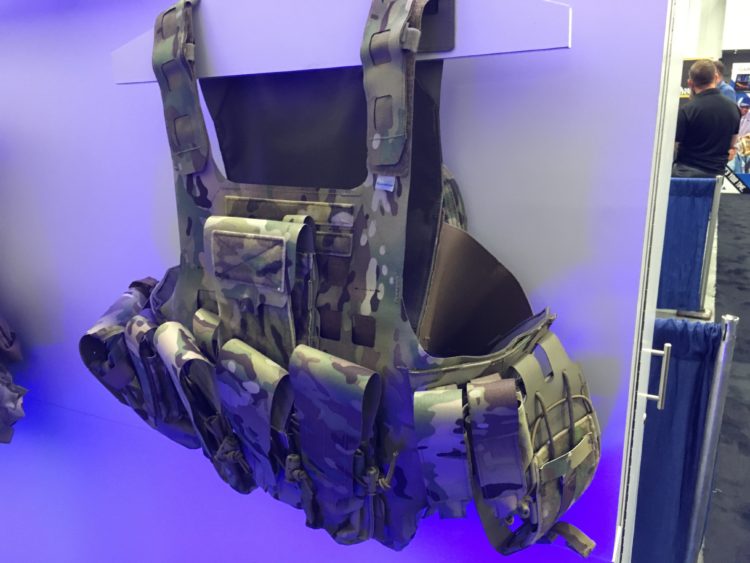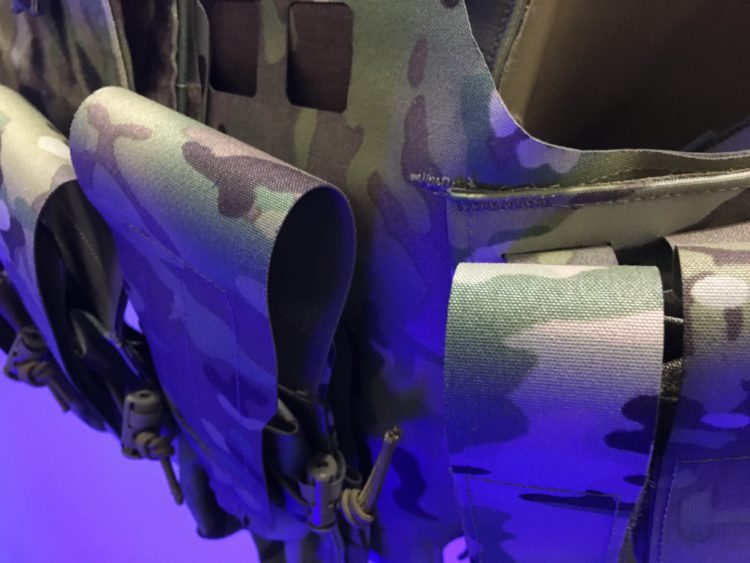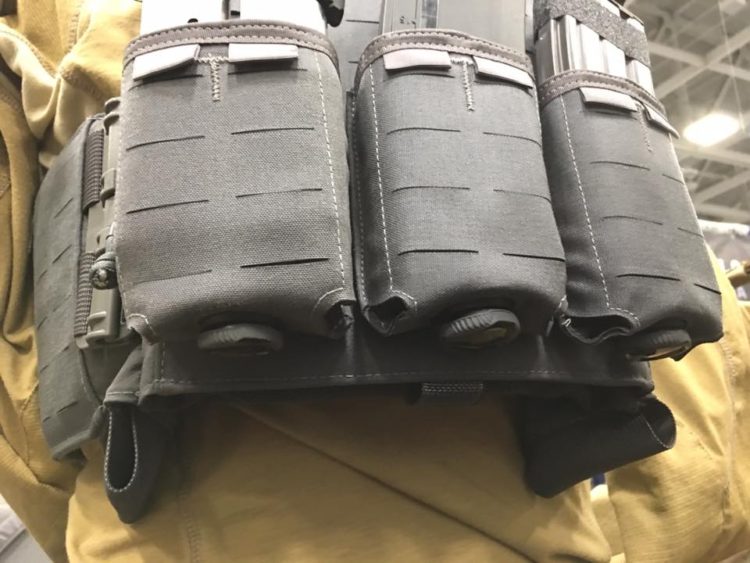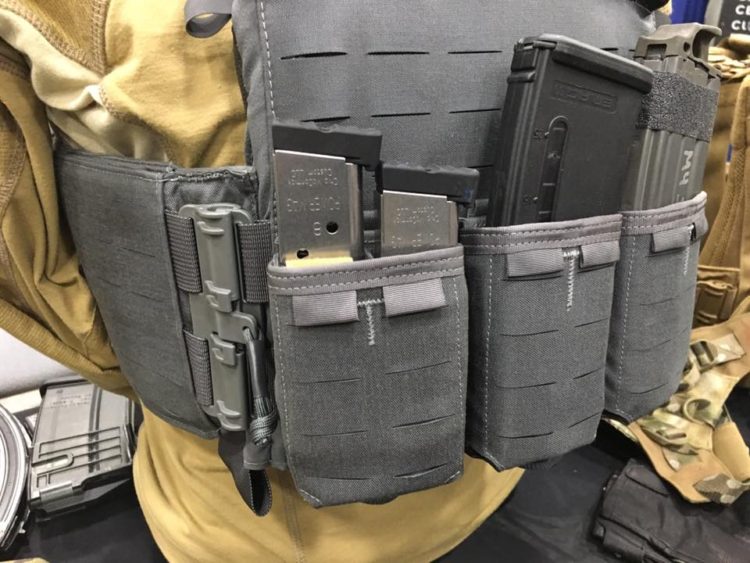In his book The Art of Warfare in the Age of Napoleon By Gunther E. Rothenberg, the writer presents the difficulty troops in the past had carrying excessive weight. He writes about one French rifleman who complained about the 80 pounds he must carry yet sadly this rifleman is one of the lightest troops in Napoleon’s service. It was said that Wellington cared little about the color of his men’s trousers and all he cared was they came to the battle with 60 rounds in their kit. Uniforms in garrison may be pretty but pomp and pride isn’t what saves troops on the battlefront.
A common saying at the time was, “Our emperor makes war not with his hands but with our legs.” Rations for troops at that time were bulky and heavy and was often eaten on the first day. Some armies buried their food beneath the ground in the forests. Troops given loaves of bread ate the loaves on the first day and threw away the flour. The ground might look as if it were covered in snow from the waste of rations.
One story noted that 400 men died before the arrival of their reinforcements. The number of deaths, though likely exaggerated, was due to the impediment of stress caused by lack of water, food, and too much weight.
In our modern age Army advisers working in the rugged terrain of Afghanistan will tell you that their movements were slowed down by the weight of their armor, weapons, and anything else carried. Moving across flat land can be difficult but moving uphill is never thrilling. The searing Afghanistan heat, which tops 122F in July and August can wreck troops. According to the Ministry of Defence, U.K. infantry soldiers carry around 145lb, 20Ib more than their US counterparts.
Many soldiers and Marines in Iraq and Afghanistan routinely carry between 60 and 100 pounds of gear. A rifle alone can weigh over 7.5 lbs. A ruck can weigh over 50 + lbs. if you toss in water, food, electronics and batteries, and ammo.
“You can’t hump a rucksack at 8.000 feet for 15 months and not have an effect,” said Gen Peter Chiarelli, the US Army’s former vice chief of staff.
Heavy loads contribute to chronic pain for many. One study put the average load carried by a soldier’s average bodyweight of 175 lbs at 37 lbs of gear. That is about 37 percent of his bodyweight. The military is always looking for ways to lighten their troops load. Robotic mules are being developed by companies like DARPA. A great number of troops medically retired from the military are retired with musculoskeletal, connective-tissue or spinal injuries, according to a study led by a Johns Hopkins University researcher. A reduction in weight for troops and law enforcement is a
Companies like MATBOCK and Blue Force Gear are finding ways to support a market that is looking for lighter gear that keeps a fighting man agile and therefore capable on his team. We were most impressed with the MATBOCK Berserker Minimalist Carrier. This has been on the market awhile but always good to see quality kit.
The company Matbock describes their business mentality, “relying on our own tactical experiences, we have developed extensive product lines that not only increases operator’s effectiveness but also decreases their load out.” Below are images of their Assault Panels. These panels will not absorb water and are perfect for maritime operations. Configure the panels with any pouches to support the operation. Dimensions: 9.25″ x 5.25″ (23.50cm x 13.34cm), Weight: 2.5oz, $67-$75.00
I just returned yesterday from the ADS, Inc., Warrior Expo 2017 in Virginia Beach and had a chance to see a lot of thoughtfully made gear. Companies like MATBOCK, 5.11 and Blue Force Gear are creating innovative products and many companies are sure to follow these ingenious brands. Many companies continue to use Cordura in the construction of their equipment.
Because of its durability and resistance to tears and scuffs Cordura has traditionally been used in making everything from armor carriers and down to the components such as MOLLE pouches that affix to the carrier. Cordura is the brand name for a collection of fabrics used in a wide array of products including trousers, backpacks and other military wear. Cordura is usually made of nylon and then mixed with cotton or other natural fibers. Cordura fabrics are available in a wide range of constructions, weights and aesthetics designed specifically for military and extended outdoor use and have been used by our military for over 45 years. In the brief video I made you can see below how thin the material is on the Blue Force Gear carrier compared to a known brand as a comparison and contrast.
Matbock calls their material Ghost fabric because of its lightweight. 5.11 introduced something similar at the Modern Day Marine show at Quantico in 2016 that members of Delta Force were already using. Blue Force Gear, in particular, is designing gear like their PLATEmius V2 Plate carrier to be the lightest tactical plate carrier available. They are taking the bulk out of the garment.
They are using their own proprietary ULTRAcomp™ laminate material which is half the thickness of a dime and 4 times as abrasion resistant as 1000d CORDURA® fabric.
The ULTRAcomp laminate is laser cut to create a fully MOLLE compatible matrix of slots and voids that greatly reduces weight, complexity, and potential failure points compared to traditionally constructed MOLLE platforms. It will be interesting to see what debuts at the SHOT SHOW in 2018. Stay tuned…
Below are some additional photos I took of Blue Force Gear
*The views and opinions expressed on this website are solely those of the original authors and contributors. These views and opinions do not necessarily represent those of Spotter Up Magazine, the administrative staff, and/or any/all contributors to this site.








